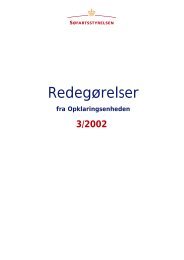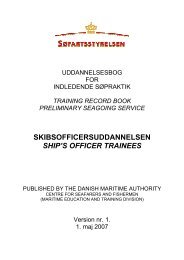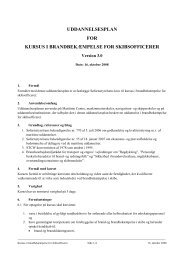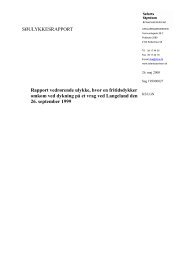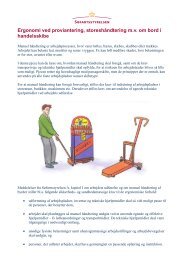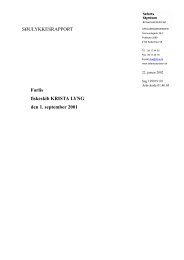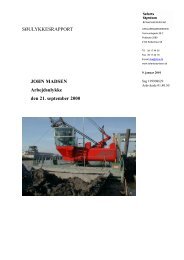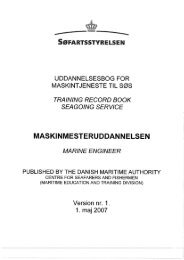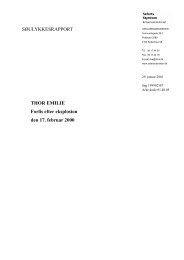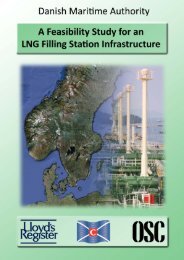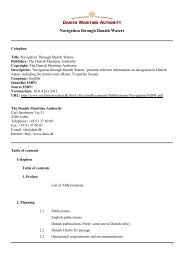22Chapter B XXII ok-ARI Sagsbeh CGE pdf
22Chapter B XXII ok-ARI Sagsbeh CGE pdf
22Chapter B XXII ok-ARI Sagsbeh CGE pdf
- No tags were found...
You also want an ePaper? Increase the reach of your titles
YUMPU automatically turns print PDFs into web optimized ePapers that Google loves.
3.2 hold an International Pollution Prevention Certificate for the Carriage of Noxious LiquidSubstances in Bulk, in which it is certified that the gas carrier may carry only those noxiousliquid substances identified and listed in the appropriate Gas Carrier Code;3.3 be provided with segregated ballast arrangements;3.4 be provided with pumping and piping arrangements which, to the satisfaction of theAdministration, ensure that the quantity of cargo residue remaining in the tank and itsassociated piping after unloading does not exceed the applicable quantity of residue asrequired by regulation 12.1, 12.2 or 12.3; and3.5 be provided with a Manual, approved by the Administration, ensuring that no operationalmixing of cargo residues and water will occur and that no cargo residues will remain in thetank after applying the ventilation procedures prescribed in the Manual.Part 2 – Categorization of noxious liquid substancesM Regulation 6 – Categorization and listing of noxious liquid substances and other substancesAttention is drawn to the fact that the following regulation is the Danish Maritime Authority’stranslation of MARPOL. As regards Danish legislation, reference is made to Consolidated Act no. 925of 28 September 2005 on protection of the marine environment, chapter 3, and Order no. 166 of 1 April1987 on classification and categorisation as well as discharge of liquid substances carried in bulk.1 For the purpose of the regulations of this Chapter, noxious liquid substances shall be divided intofour categories as follows:1.1 Category X: Noxious liquid substances which, if discharged into the sea from tank cleaningor deballasting operations, are deemed to present a major hazard to either marine resourcesor human health and, therefore, justify the prohibition of the discharge into the marineenvironment;1.2 Category Y: Noxious liquid substances which, if discharged into the sea from tank cleaningor deballasting operations, are deemed to present a hazard to either marine resources orhuman health or cause harm to amenities or other legitimate uses of the sea and thereforejustify a limitation on the quality and quantity of the discharge into the marine environment;1.3 Category Z: Noxious liquid substances which, if discharged into the sea from tank cleaningor deballasting operations, are deemed to present a minor hazard to either marine resourcesor human health and therefore justify less stringent restrictions on the quality and quantity ofthe discharge into the marine environment;1.4 Other substances: Substances indicated as OS (Other substances) in the pollution categorycolumn of chapter 18 of the International Bulk Chemical Code which have been evaluatedand found to fall outside category X, Y or Z as defined in regulation 6.1 of this Chapterbecause they are, at present, considered to present no harm to marine resources, humanhealth, amenities or other legitimate uses of the sea when discharged into the sea from tankcleaning or deballasting operations. The discharge of bilge or ballast water or other residuesor mixtures containing only substances referred to as ‘‘Other Substances’’ shall not besubject to any requirements of the Chapter.7



